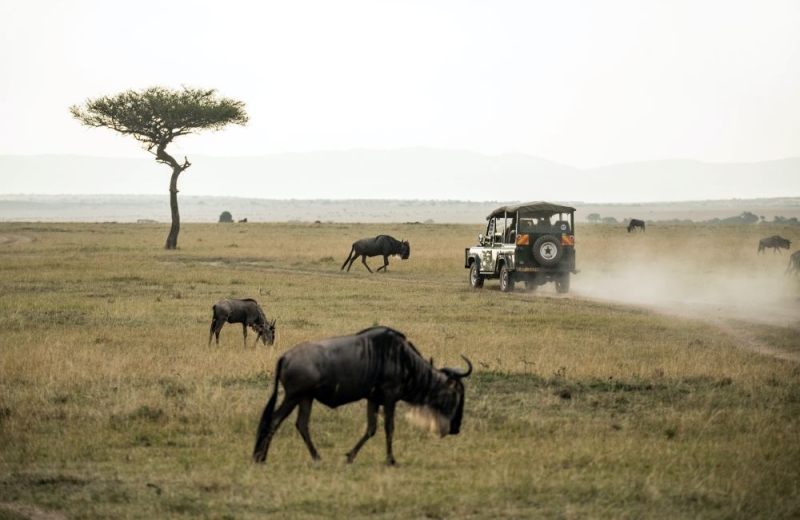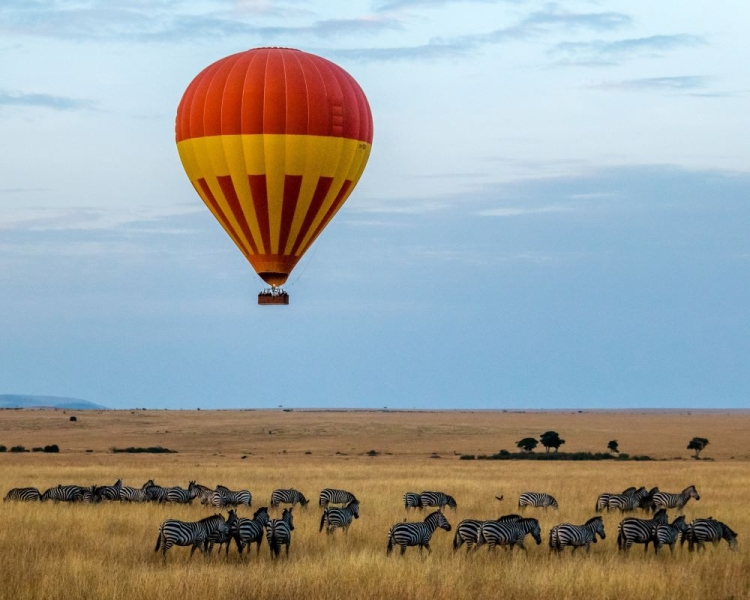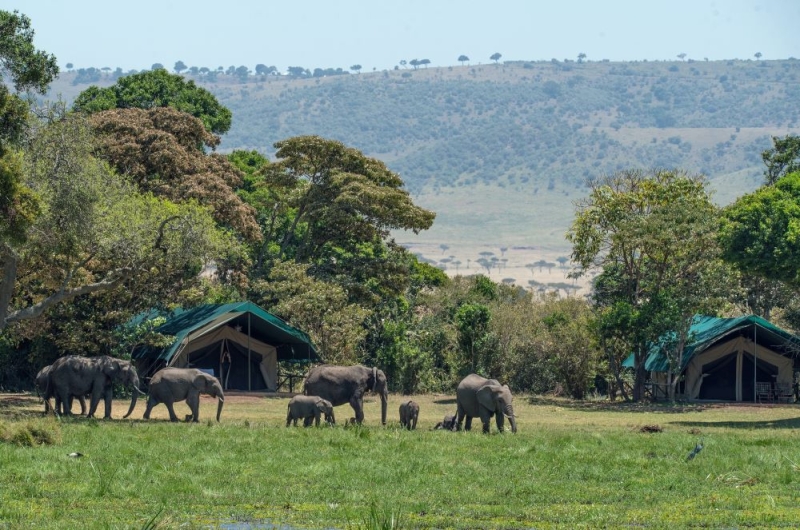
Why and where to go on a safari
Safari is a word that evokes tropical winds and exotic countries. And, pronouncing it, we conjure up the image of the African continent, from where it came to our vocabulary. In Swahili, “safari” means “travel,” and Europeans added an additional meaning to it: hunting wild animals.
Fortunately, now the hunt has slowed down, leaving rare species and our grandchildren a chance to see each other. With the advent of affordable digital cameras and zoom lenses, hunting photography has become fashionable, and experts from all over the world are traveling to Africa for rare trophies.
But why exactly Africa? After all, there are places in the world where the species diversity of the local fauna is not only not inferior, but even surpasses that of Africa. Absolutely yes. But we are not biologists (most of us) and do not go on long expeditions to look for rare lizards. We want to see large animals that won’t hide from us and won’t have to spend the whole day, like Sharik, chasing the animal with our “photo gun”.
Elephants, rhinoceroses, hippopotamuses, buffalos, giraffes, zebras, as well as a variety of big cats – that’s what people want to go on an African safari for.
Yes, you say, but in India there are also large wild animals. Indeed it is. Only ironically, both elephants and tigers prefer the jungle, where they are difficult to find and see. While representatives of large African fauna live in savannas, where they are easy to find and photograph.
And here we move on to choosing a region. If we greatly simplify the geography of the continent, then its north is occupied by desert; West – evergreen rain forests, covering countries with unstable political systems and alarming epidemiological conditions, as well as animals that are difficult to track in the forest.
The south and east of the mainland remain. And it just so happens that it is closer for Russians to fly to eastern African countries. Therefore, if you have not been on a safari yet, I recommend starting with a region that is closer.
Once upon a time, the earth’s crust cracked and began to move apart. The rift stretched from Syria to Mozambique, giving birth to an amazing region of savannas and lakes, which is called the Great Rift Valley, or the Great Rift (from the English word rift – rift). This is where I would begin my acquaintance with Africa. And, when choosing a country, among the most likely candidates for a trip, I would consider Kenya.
Why Kenya?

Firstly, it is the closest of the countries where savannas begin after the Sahara. The country is Christian, a former British colony and many people speak English.
Kenya’s landscapes are very diverse, and the wealth of wildlife will satisfy the needs of even the most discerning wildlife lovers and sophisticated photographers.
If you don’t have a very good idea of what Kenya looks like, then remember the cartoon “The Lion King”. After all, it takes place exactly there, and now you will understand why.
Best Safari Parks

I’ll start with Amboseli Park to explain why the cartoon takes place in Kenya.
Remember the beginning, when the animals go to look at the newly born Simba? There is a beautiful panorama of animals marching through the savannah against the backdrop of the majestic Kilimanjaro. You can get such a picture in Amboseli Park. Although the extinct volcano itself is located in Tanzania, the savannah overlooking it is located in Kenya, and if you want to enjoy it a textbook view during your trip, then it’s worth including Amboseli Park in your program.
It is also famous for its high population of African elephants (more than a thousand heads). Here you can meet lions and cheetahs, numerous zebras and wildebeest, as well as the Masai giraffe (one of the three giraffe species in Kenya).

The largest park in the country – Tsavo, divided into Western and Eastern parts by the river of the same name, also deserves attention as a stronghold of species diversity. Its impressive territory, which is mainly a dry savannah, is home to many rare animals, of which the rare black rhinoceros is worth highlighting. Tourists prefer Western Tsavo because of its more varied terrain – there are hills, springs and ponds that attract various birds and animals.

If in Kenya you want not only to see the savannahs, but also to enjoy other landscapes, then it is worth including in your trip plan Aberdare National Park, which is located on the slopes of the ridge of the same name. The height of the mountains exceeds 4,000 meters above sea level. River valleys, cloudy forests and bamboo groves – all this is Aberdare. There are also many monkeys in the forests – for example, gverets and blue monkeys.

For mountain lovers, I recommend Mount Kenya National Park, where, as you might guess from the name, the mountain of the same name is located, the second highest in Africa (5199 meters). The territory contains eight species of natural landscapes and many endemics – species that can only be found in this region.

Lake Nakuruis the third most visited park in Kenya. Despite being relatively small, Nakuru receives a huge number of tourists every year. Their goal is to see the second largest land animals after elephants – white rhinoceroses. Alas, there are not many of these giants left, and Nakuru is perhaps the best place in East Africa to watch them. Another curiosity that attracts connoisseurs of rare species to the park are Rothschild’s giraffes. The salt lake itself is the icing on the cake. Its waters are home to small crustaceans, so beloved by pink flamingos. Several hundred thousand birds feed here during the season.

Before visiting the most popular park in Kenya, you should first get to lake Naivasha, located nearby. It is fresh, and there is a lot of fish in it, which attracts a huge number of aquatic and semi-aquatic birds. By the way, many birds fly here for the winter from Russia. Among the local species, it is worth mentioning the screaming eagle and the sacred ibis, so revered by the ancient Egyptians.

Photo: Yakov Oskanov/Shutterstock.com
Well, the most popular park in the country is Masai Mara, occupying the northern part of the endless plains right up to the border with Tanzania. On its side, the Masai Mara is adjacent to the equally famous Serengeti Park; together they form a huge ecosystem, known primarily for the phenomenon called the Great Migration. Millions of wildebeest and zebras move in circles following the rains and the grass that grows after them. The culmination of this process is the crossing of the Mara River, so popular among animal photographers: from a high steep bank, animals jump into the water, where crocodiles are already waiting for them…

Organizational issues

In national parks there are two types of accommodation: camps – large comfortable tents with beds, shower and toilet – and lodges – houses that are rooms. Camps are usually cheaper. There are no safaris during the day, as the animals are hiding from the heat. Travel times: from dawn to 11:00 and from 16:00 to 18:30. Exact safari hours depend on daylight hours and time of year. It is prohibited to move around the reserves at night. And electricity in camps is often supplied by the hour and is supplied from a generator, so it is better to have a tee with you in order to quickly charge all devices.
And in conclusion. It just so happens that Kenya is not famous for its historical sites or modern architecture. But on the other hand, it has gorgeous beaches on the ocean and incredible nature that makes it worth flying there for. I have never met a person whom this country would leave indifferent.
Hotels we liked
Lake Nakuru Lodge – from 8,500 rubles* per night per person
Kibo Safari Camp – from 7,900 rubles* per night per person
Round-trip air ticket price: from 38,500 rubles*
*Prices are current at the time of publication
Photo: unsplash.com; shutterstock.com

